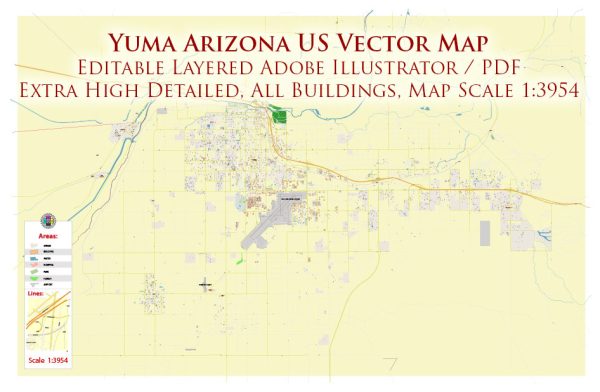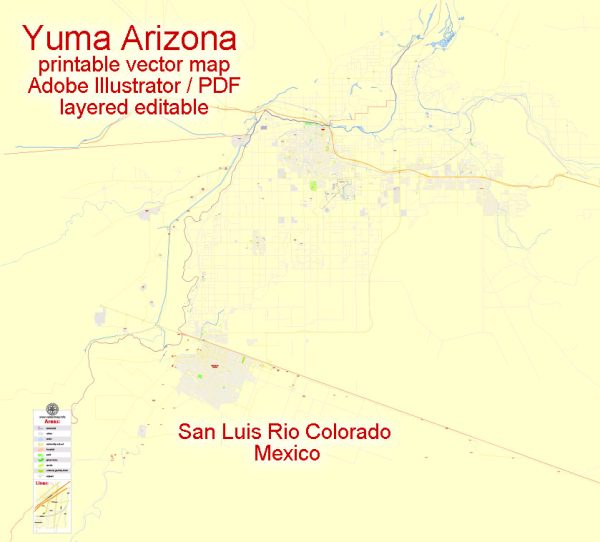Yuma, Arizona, has a rich history shaped by its geography, climate, and strategic location along the Colorado River. Here is an overview of the urban development history of Yuma:
- Early Settlement and Native Influence:
- The Yuma area has a long history of human habitation, with Native American tribes such as the Yuma and Quechan residing in the region for centuries. The Colorado River provided sustenance and transportation, influencing settlement patterns.
- Spanish Exploration and Mission Era:
- Spanish explorers, including Juan Bautista de Anza, passed through the Yuma area in the 18th century. The Spanish established the Yuma Crossing in 1781, and a mission, San Pedro y San Pablo de Bicuñer, was founded to serve the indigenous population.
- Strategic River Crossing:
- Yuma’s location at the natural crossing point of the Colorado River made it a vital link for travelers and traders. The Yuma Crossing became part of the Southern Emigrant Trail during the mid-19th century, connecting California to the eastern United States.
- Military Presence and the California Gold Rush:
- Yuma’s strategic importance led to the establishment of Fort Yuma in 1850, providing protection for travelers and settlers. The town experienced a surge in population during the California Gold Rush, as prospectors and fortune seekers passed through on their way to the goldfields.
- Railroads and Agricultural Development:
- The arrival of the Southern Pacific Railroad in the late 19th century contributed to Yuma’s growth. The availability of rail transportation facilitated the export of agricultural products, particularly citrus fruits and vegetables. Irrigation projects, such as the Yuma Project, further supported agricultural development.
- Yuma’s Role in Transportation:
- Yuma continued to be a key transportation hub in the early 20th century. The Ocean-to-Ocean Highway (later part of U.S. Route 80) passed through Yuma, connecting the Atlantic and Pacific coasts. The construction of the Ocean-to-Ocean Bridge in 1915 improved river crossings.
- Military Expansion:
- During World War II, Yuma’s military significance increased with the establishment of the Yuma Army Air Field (now Yuma Proving Ground) and the Marine Corps Air Station Yuma. These installations played a crucial role in training and testing during the war and continue to be important today.
- Modern Development and Population Growth:
- Yuma has experienced significant population growth in the latter half of the 20th century and into the 21st century. The city has expanded with residential, commercial, and industrial developments. Agriculture remains a vital part of the local economy, and the city has diversified its economic base.
- Tourism and Outdoor Recreation:
- Yuma’s climate and natural attractions, including the Colorado River and the nearby Imperial Sand Dunes, contribute to its popularity as a destination for outdoor recreation and winter visitors. Historic sites, such as Yuma Territorial Prison, attract tourists interested in the region’s history.
In summary, Yuma’s urban development history reflects its role as a strategic crossing point, military presence, and agricultural center, with each phase contributing to the city’s growth and evolution.



 Author: Kirill Shrayber, Ph.D.
Author: Kirill Shrayber, Ph.D.